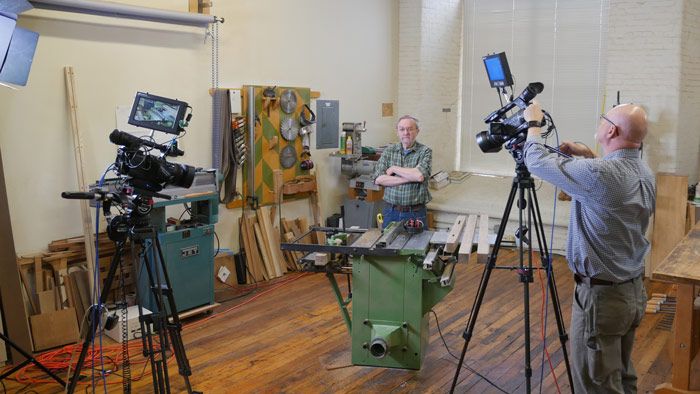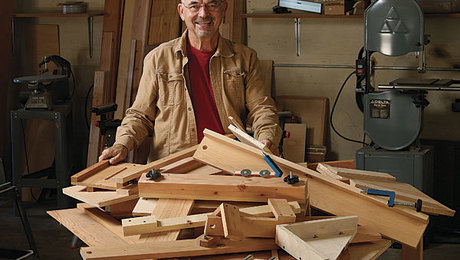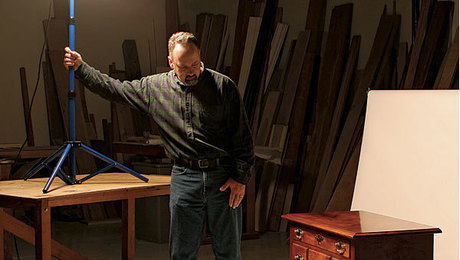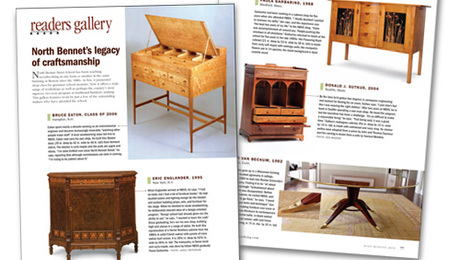What you don’t see in our photos
The moments where our authors stop and slow down have been some of the most educational for associate editor Barry NM Dima.
At Fine Woodworking, when an editor works on an article, they also handle the photos, traveling to the author to photograph their project or technique. That means we steward the content from beginning to end—a great way to both learn the author’s process and convey it to the reader. Personally, I lean on that responsibility when working on a manuscript with an author or taking photos. I’m constantly asking myself, “What needs to be said and shown to best convey this process?” The photo shoot, where the author makes a piece in real time, is a huge boon because, unlike the words alone, you see the actual, real-life steps. But there’s one crucial aspect of shoots I’ve never been able to translate to our readers, and that’s the care the authors put in.
That care has been an incredible learning experience—at least once I stepped outside of myself. While it’s not unusual to have to wait while an author fits a piece—they are often building a piece of furniture, after all—the reality of that process took a little while to seep in. Admittedly, I can be a little slapdash and casual. So when watching these pros, I’d sometimes wonder, “Yo, how in the world are they still fitting that tenon?” or “More sanding? For real?”
Yup, for real. See, these photo shoots were my first time being up close and personal with high-level skills and results—with fine woodworking, if you will (bum dum tss). The more I saw the results, like a gorgeously shaped curve, universally even reveals, or a tenon that slid home sweetly, the more it demystified the whole furniture-making process. While I’ve always appreciated the tremendous skills and knowledge of our expert makers, what I didn’t appreciate (or even grasp, really) until I began working here was their care and patience. Sure, these pros cut tenons on a tablesaw like many of us, but they check and recheck the fit—and they still aim for fat tenons so they can fit each individual one. And yes, they do typical surface prep, but many don’t just sand to 320 grit and figure it’s good. They still examine every surface with a raking light before applying finish.
This work sounds exhausting, and it probably is very much so. But my real takeaway is that although you have to do more work to do good work, this stuff isn’t magic. There’s no Hogwarts, genie, crossroads deal, talisman, or potion. For me, this revelation brought the whole process closer to earth.
The moments where our authors stop and slow down have been some of the most educational for me. Sadly, they also make for lousy photos. Plus, judging from the many submissions we get for our Readers Gallery, plenty of our readers also take the necessary care. So this message is for anyone who still can’t figure out why their projects have so. many. gaps. I’ve been there. Heck, sometimes I’m still there. Now, though, I take a breath and slow down. Trust me. There are plenty of fine woodworkers doing it right now.
 |
|
 |
A Woodworker’s Guide to PhotographyTake great furniture photos with the camera you already own |
 |




















Comments
How true, Barry! There are days that I'm tired of fitting, sanding and prepping. The, wala! It all comes together...thanks for a great magazine!
This is one of my favorite pieces on the website! Well done, Barry! I had a bit of a "Ooooh!" moment reading it, so I can't begin to imagine the significance when you get to realize it in person with the authors! So great!
Log in or create an account to post a comment.
Sign up Log in